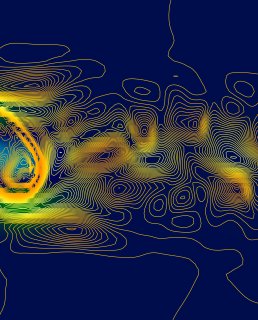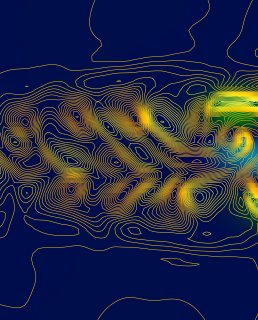Entry, 2021
The image was taken on May 13th, 2020, from Mt. Locke at McDonald Observatory, and shows a surreal night scene in West Texas. In the foreground, light pollution from the city of Alpine, TX is visible. McDonald Observatory is working with Alpine and other communities to preserve our night skies for scientific research and enjoyment. In the sky, green and red ripples of airglow are visible. Airglow is a very faint emission of atoms and molecules in the high upper atmosphere, near the edge of space in the ionosphere. In the center of the frame are columns of red sprites, which are faint and poorly understood electrical discharges associated with powerful lightning strikes. This event was triggered by a severe thunderstorm over 150 miles away. The clouds of the storm complex are visible along the horizon. and the sprite is over a dozen miles long. Sprites may be initiated in part due to irregularities in the ionosphere. The pattern in the airglow is caused by the powerful distant storm, which sends waves outwards like ripples in a pond, and may have played a role in triggering the sprites. The image shows the beauty and complexity of our atmosphere, and the value of preserving the night sky.
Credit:
Stephen Hummel
Dark Skies Specialist, McDonald Observatory




